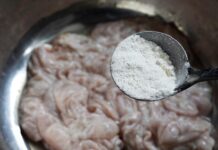Did you know that toothpaste comes in a variety of flavors like mint, strawberry, charcoal, and coconut? One thing they all have in common is their sweetness. Why is that? Let’s find out!
Why is There Sweetener in Toothpaste?
The sweet taste in toothpaste is added by manufacturers to mask the unpleasant flavors of soap and detergents present in the toothpaste formula. Toothpaste typically contains abrasives, fluoride, detergents, and water (making up 20-40% of the paste). While these ingredients are essential for effective teeth cleaning, their flavors can be off-putting.

To make toothpaste more palatable, manufacturers add sweeteners like Xylitol, sorbitol, and saccharin. These sweeteners improve the overall taste of the toothpaste, making it a more pleasant experience for users. Interestingly, these sweeteners don’t act like regular sugar; they also help prevent tooth decay and retain moisture in the paste, ensuring it doesn’t dry out over time.
In addition to choosing the right toothpaste, it’s essential to know how to properly brush your teeth for optimal oral hygiene. Here are some tips to help you do just that:
Choosing the Right Toothbrush
Opt for a toothbrush with soft, flexible bristles and a small head to effectively reach all areas of your mouth and remove plaque build-up. Remember to replace your toothbrush every three months to prevent the buildup of germs and bacteria.
>>

Brushing Duration
Take your time when brushing your teeth. Aim for at least two minutes to ensure you thoroughly clean your teeth and remove any plaque buildup.

Brushing Technique
Pay extra attention to the outer and inner surfaces of your upper and lower teeth, chewing surfaces, and the top surface of your tongue. These areas tend to accumulate food debris and plaque, so give them a good scrub!

We hope that this article has answered your questions about toothpaste sweeteners and provided useful tips for improving your oral hygiene routine.






























